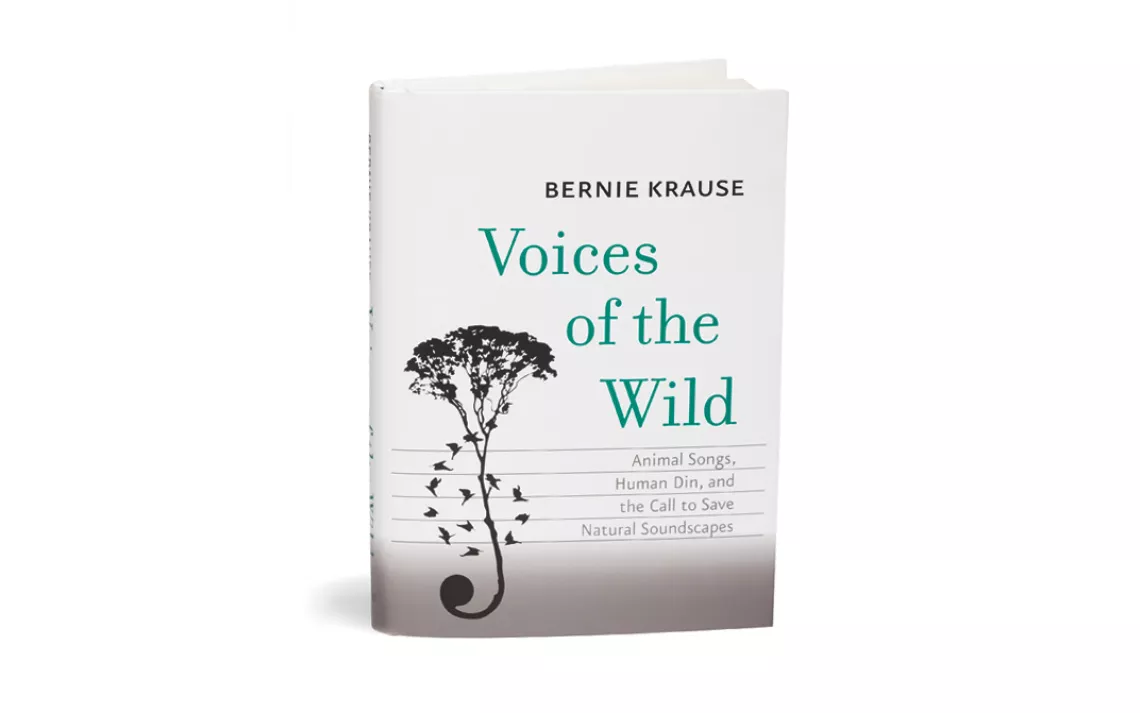Voices of the Wild
Capturing the sounds of nature before they disappear.

Voices of the Wild: Animal Songs, Human Din, and the Call to Save Natural Soundscapes, by Bernie Krause (Yale University Press, August 2015), photo by Lori Eanes
In the late 1960s, when musician Bernie Krause first wandered into a park to record nature sounds, he had 30-plus pounds of recording equipment and little idea of what he had come to collect. Half a century and 4,500 hours of recordings later, he has written Voices of the Wild: Animal Songs, Human Din, and the Call to Save Natural Soundscapes, an introduction to soundscape ecology—the field he helped pioneer.
Krause has traveled around the world recording Arctic glaciers, Rwandan mountain gorillas, Sumatran rainforest, Antarctic seals, and more. But more than half of his archive comes from locations that are now "so badly compromised by ... human intervention that the habitats are either altogether silent or ... can no longer be heard in their original forms."
For example, at a site on Costa Rica's Osa Peninsula, before-and-after recordings reveal how clear-cutting has reduced a symphony of birdsong to what sounds like the work of a few holdouts.
Krause argues that soundscape ecology has the potential to inform the way we understand not only wild habitats but also disciplines across the arts and sciences. But first the field must recruit more soundscape ecologists and record as much habitat as possible, while it still exists. Recording technology has become so light, inexpensive, and easy to use, he says, that even an eight-year-old citizen scientist can experience this "thrilling realm of discovery." Let that be your call to action.
Listen to some sound examples from Voices of the Wild:
Weddell seals, Antarctic, by Doug Quin
Bearded seals, Alaska, by Martyn Stewart
Lincoln Meadow, June 1988, biophony before selective logging
Lincoln Meadow, June 1989, biophony after selective logging
Osa Peninsula, Costa Rica, 1989, before clear cutting
Osa Peninsula, Costa Rica, 1996, after clear cutting
This article appeared as "Calls of the Wild" in the January/February 2016 print edition of Sierra.
 The Magazine of The Sierra Club
The Magazine of The Sierra Club







